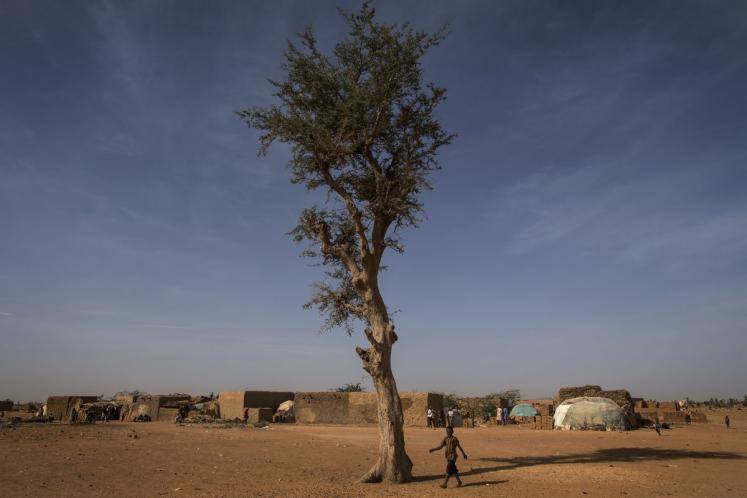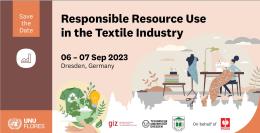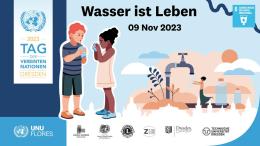Last year, we were invited to reflect on the UN’s role in conflict and disasters for the build-up to the 2016 Quadrennial Comprehensive Policy Review (QCPR) – the notorious instrument that serves as Member States’ policy guidance for the UN Development System (UNDS). Traditionally, few serious analysts have paid attention to the QCPR. But we believe that, this year more than any other, the QCPR matters.
We have learned, the hard way, that there will be no sustainable development without peace and no peace without sustainable development. We have also learned that the hardest places to deliver on Agenda 2030, and perhaps the core portions of “leaving no one behind”, will require finding a way to bring peace and development to people who suffer from mass violence or conflict.
Our paper (downloadable here) suggests that the UN’s fragmented discussions on resilience, prevention, recovery, and transition serve to obfuscate the question that its Member States are asking: how can the United Nations better support countries to reduce the likelihood of a crisis occurring or recurring and mitigate the impact when it does?
The sources of these risks are broad – conflict, mass violence, environmental change, pandemics, and economic shocks, to name but a few. We therefore feel that the Member States would be more likely to have the United Nations that they want and need, if they were to formally charge the organization with delivering on the question above. (In the more formal language of the QCPR, and to stress the deep link to Agenda 2030, this could involve defining a core role for the UNDS as supporting countries in reducing and managing major risks to sustainable development.)
Unfortunately re-orienting the organization in such a way is hard – hard enough that it meets the threshold for being a “wicked problem” – one that is highly resistant to resolution. The paper provides brief theoretical background on why this idea matters, reflecting research which has shown that:
-
Wicked problems are difficult to clearly define, unstable, and have many interdependencies and are often multi-causal;
-
Attempts to address wicked problems often lead to unforeseen consequences;
-
There are no clear solutions, and the remedies are about changing behaviours; and
-
No single organization is responsible for the solution, and the attempts to solve the problem are characterized by chronic policy failure.
The last point is critical. Which UN entity is responsible for managing risks? Or for managing transitions? Given that the first major calls for systemic change emerged after the events in Rwanda in 1994 and 1995, and remain absolutely true today, it is hard not to argue that there are chronic policy challenges.1
The paper then goes on to diagnose four major mismatches that prevent resolution:
-
The mismatch between the prescription for improvement and the problem: Essentially, the assumption that greater coherence alone will reduce the risks of transition underestimates the fundamentally political nature of such transitions, and the national ownership and responsibility for their success or failure.
-
The mismatch between governance, structure, and task: Radically different governance structures across and within the Secretariat and agencies/funds/programmes, and within those two communities, limit the potential for improvement within the current system. CPR is doing more work on governing the UNDS, together with Linklaters (and has written on this issue here).
-
The mismatch between funding and desired outcomes: Linked to governance, radically different funding streams across the UN’s operational activities provide rigid incentives against better collaboration.
-
The absence of system-wide operational evidence: There is a near-total absence of analysis built on clear baselines and theories of change, that demonstrate the positive impact or relative impact of any particular model over another, or even of coordination itself. The fact that the UN does not operate in a unified manner means that evaluations are primarily at the project level, very rarely at the entity level, and never at the level of the collective response of the United Nations to a single event.
These mismatches raise a challenge to Member States. In the SDG Declaration, Member States claimed to see value in an “adequately resourced, relevant, coherent, efficient and effective UN system.” But, simply put, this is not the system they have built.
The paper therefore makes two basic findings:
-
That the fundamental changes required to make the UNDS better able to support countries emerging from crises have not been made; and,
-
That the system is of Member States’ making, and can only be changed through their collective will.
If Member States want better outcomes, they must accept the extent to which the system reflects their interests and desires, and shape their system accordingly. By charter, the United Nations serves the people. By practice, it serves Member States.
Therefore, we argue that the Member States must use the opportunity of the QCPR to set a strategic direction for the United Nations, and articulate its role. More concretely, we assert a core portion of the UN’s role as a crisis manager should be thought of as supporting countries in reducing and managing major risks to sustainable development. (Last week’s mini-essay provides a broader framework for the UN in Agenda 2030 – this paper deals primarily with conflict and disasters, as was its remit.)
The paper offers some additional operational ideas – the need to understand the competitive advantage of the United Nations in this space; the need to move away from coherence to the articulation of outcome-driven goals; and the key potential role of evidence in the United Nations – which echo our arguments elsewhere.
But fundamentally, we see no doubt that the UN is at a point of change. The Member States have a choice: use their instruments to help their organization remain relevant, or not. The QCPR should not hide behind its operational focus; it is an essential instrument in providing a clear expression of Member States’ desires for their United Nations. Can Member States come together in support of their agenda, to build the United Nations they called for?
[1] A. Donini and N. Niland, "Rwanda. Lessons Learned: A Report on the Coordination of Humanitarian Activities.’ United Nations, Department of Humanitarian Affairs" (1994); and J. Macrae, "Aid under Fire: redefining relief and development assistance in unstable situations," Wilton Park (UK) 7–9 April, 1995. Disasters, 19: 361.
This article is based on a report prepared for the United Nations Department of Economic and Social Affairs for the 2016 Quadrennial Comprehensive Policy Review.
Suggested citation: Rahul Chandran., "All That Is Gold Does Not Glitter: Why a Better Quadrennial Comprehensive Policy Review Is Essential for Agenda 2030," UNU-CPR (blog), 2016-02-18, https://unu.edu/cpr/blog-post/all-gold-does-not-glitter-why-better-quadrennial-comprehensive-policy-review.




